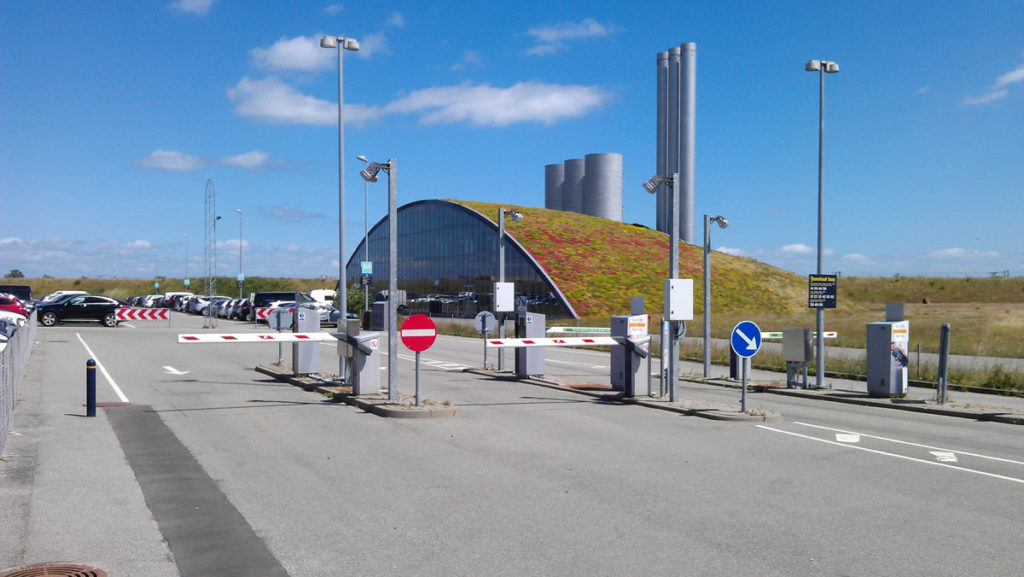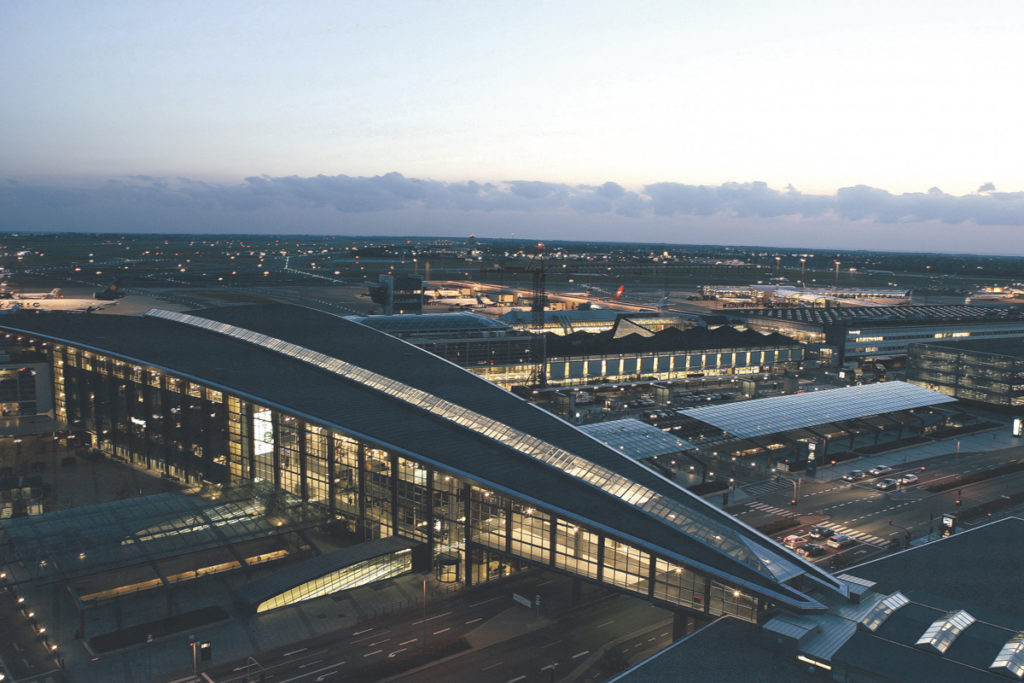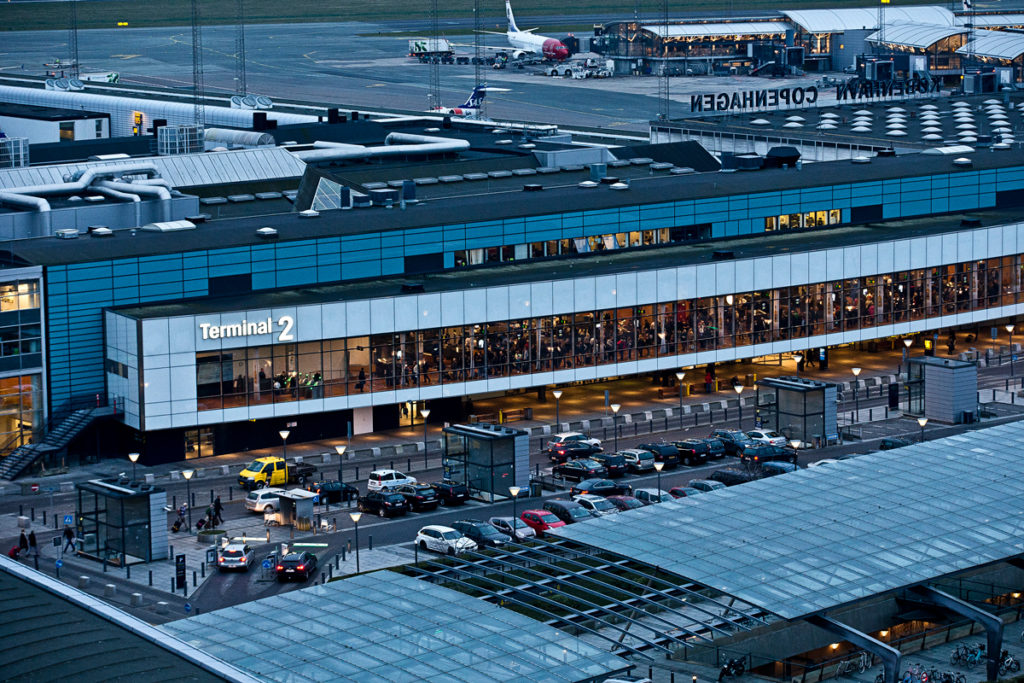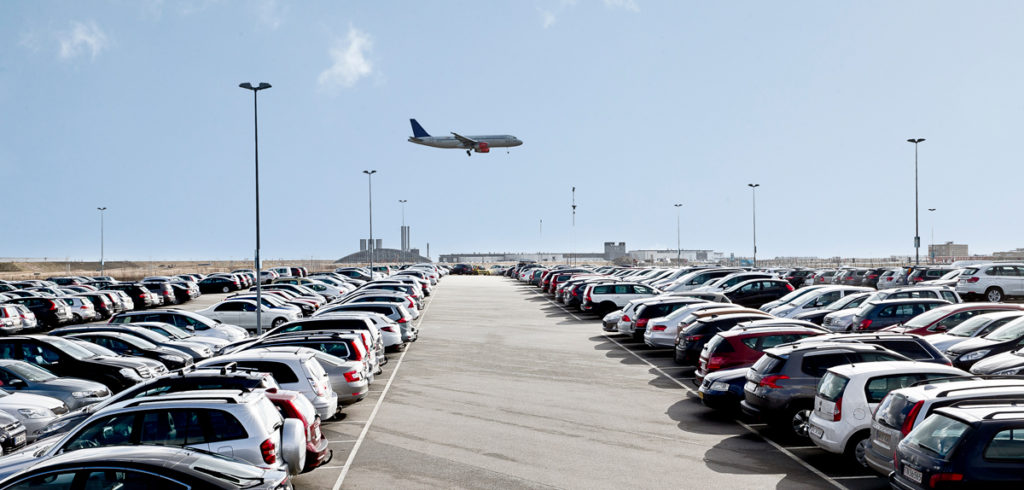According to Luigi Carparelli, large projects account manager at HUB Parking Technology, parking has a major effect on how passengers rate their journey, making it essential that airports get it right. Passenger Terminal Today speaks to Carparelli about the challenges and opportunities facing airport parking.
How can airports ensure their parking offering remains competitive?
Parking is usually the first and the last impression that drivers get when visiting a venue. Even if they do not consciously notice it, parking has a major effect on how people rate their visit. Every airport is unique in terms of what they offer as a product to their end customers, and the working environment they provide for their personnel. Their parking infrastructure is expected to be welcoming and functional, passenger flow smooth, and the overall experience comfortable and well-facilitated.
Digital innovations can add a customized layer, where we make it easier to connect the set of services offered by the airport with the customers’ needs. It can make a tangible difference in the traveler’s experience.
Studying passenger dynamics facilitates the implementation of services that meet travelers’ expectations, and sets a sustainable direction for the future. Airports need reliable tools that help identify potential areas of improvement, measure them, and multiply touchpoints with passengers at all stages of the journey.
Benchmarking and exchanging successful experiences with comparable airports is a collaborative practice that can benefit all actors in the aviation sector. Industry events and airports visiting each other regularly are also ideal for exchanging best practices and learning from similar organizations.
 What are the key challenges associated with the airport parking sector?
What are the key challenges associated with the airport parking sector?
Parking lots are critical infrastructure, and under pressure to maximize capacity, enhance financial performances and mitigate their impact on the environment and the community.
A pathway for progress must then tackle capacity usage, employee parking and facility footprint. How? One of the adoptable measures involves reducing the percentage of passengers arriving by car. Airports start to allow taxis and Uber, Lyft etc. to pick up passengers and not only to drop them off, reducing emissions per passenger.
Injecting digitization within parking and drop-off areas is also helpful: smart guidance systems can reduce the congestion caused by dozens of vehicles driving in circles, looking for free spaces. Capacity is intrinsically connected with footprint – for instance, most airports in Europe are close to downtown and cannot infinitely grow by building new parking structures, but they can make them greener. They need advanced tools to monitor and report occupancy in real time, manage it flexibly, and enable predictive analysis to optimize the existing capacity.
Employee parking plays a substantial role in the flexible use of spaces: staff shifts cover 24 hours a day, in line with flight schedules, so employees’ traffic flow is likely to coincide with that of passengers. Equipping parking areas with convenient and easy access helps attract and retain users in both categories – the challenge is to apply dynamic strategies to move employees around where free spots are, minimizing disruption.
What key technologies will disrupt the airport sector?
A wide range of exciting technologies is under development, some with real potential to transform the airport’s operations and passenger experience. I find those revolving around identification management and fast payment particularly promising, as they contribute to creating a smart airport ecosystem that connects to passengers through digital devices – most of the time, the smartphone in their pockets.
Biometric technology has revolutionized access to parking areas, thanks to cameras mounted on entry and exit lanes. Once used to dynamically monitor parking spaces, and integrated with smart sensors, it also opens up new functionalities, such as ‘Find my Car’ or ‘Premium Space Tariffs’ based upon loyalty schemes.
Mobile apps are involved in every process, from the likes of Uber and Lyft services, to the enabling of fast and cashless payments at Kiss & Fly areas and traditional parking zones. For the latter, pre-booking enables airports to better plan peak capacity, thus maximizing the occupancy of all areas.
Artificial intelligence (AI), 5G and IoT will further boost the adoption of mobile technologies, and further perfect their use. The development of AI is a real game-changer. However, we are still not at a stage where AI consequences are entirely foreseeable. Also, it still requires large datasets and human inputs through supervised learning. For the time being, it might be best implemented in non-critical applications, such as predictive maintenance, to help improve system reliability.

Where should airports be investing in terms of parking technologies?
Future-proofing an airport is an ongoing challenge. A wise investment is definitely in smart sensors, advanced management software and digital platforms that enable smart payment technologies. An example of this can be seen in equipping parking lanes with long-distance readers, LPR cameras and guidance systems that help reduce congestion. Moving from physical pay stations to pre-booking and smart payment solutions frees users from the need to stop and pay.
For facility staff, managing parking operations is complex and stressful. Unpredictable traffic conditions require reliable monitoring of the parking lots, and digital tools for team leaders to evaluate the situation and take informed decisions. It is possible to achieve insight into parkers’ behavior in real time, by deploying an integrated control of all parking lots from a centralized control room. As a consequence, the interconnection of data through a central management software is key to leveraging better information and the facilitation of smarter operations.
How can airports fully optimize their parking facilities?
A key preliminary consideration is the assessment or re-assessment of service and technology providers. Mapping out a complex mixture of vendors is key to highlighting potential synergies. Correlating their data through a single digital tool is of tremendous support to decision makers, helping them see the big picture and make informed decisions such as shifting available parking spaces, or applying flexible pricing schemes to meet varying demand.
Defining metrics and enablers is a given from both a digital and a hardware standpoint. A modular parking solution is pivotal to envision future growth, and to ensure scalability from small use cases (short-term stay, or nested areas) to much larger zones and further expansions.
The parking phase of the passenger journey is the one that, once completed, marks the first or last impression – and is therefore likely to last longer. Any optimization of parking facilities must consequently include the study of traffic flow, and adequate parking guidance to make it smoother to drivers. Digital signage with variable messaging is an ideal and relatively widespread solution, whose accuracy is further improved through the connection to smart sensors, and the overarching management software.
Tell us about a recent airport parking project you worked on and how the airport improved/optimized parking operations
In Denmark, we have been working as technology partner for Copenhagen Kastrup international airport for a couple of decades now, most recently focusing on service enhancements and implementation of new functionalities within JMS management software. All entry and exit lanes are equipped with robust hardware and reliable barriers. The management software integrates with the BroBizz toll system, with valet parking services and a loyalty app proprietary to the airport. It enables the monitoring of the entire parking operations of 12,500 spaces across 20 separate areas, from one central control room. The software connects to a business intelligence tool, which enhances the way airport staff can map complex patterns of parkers’ behavior and gain insight needed to take corrective or improvement actions. Customer assistance is also tangibly improved, as the digital recovery of lost tickets is much faster than in the past: LPR and dynamic reporting make it the most practical and human error-proof solution available.
From a safety perspective, the latest installations include rising wedges: they require less depth in civil works, which avoid the risks related to drilling and digging into the ground for standard-deep equipment; and in line with their specific infrastructure planning, we implemented close-to-gate parking, then measurement and identification by vehicle class. This will help Copenhagen meet the expected growth in demand for air travel, guaranteeing passengers the utmost safety, comfort and service.

Which airports are leading the way in terms of offering the ideal parking solution?
In North America, that would be Los Angeles and Hartsfield-Jackson Atlanta international airports, both of which manage thousands of parking spaces using scalable, modular solutions. In Europe, exemplary solutions include those at Zurich International Airport and again at Copenhagen Kastrup (CPH). To stay ahead of the curve, Copenhagen has made several customer-centric services as seamless as possible: valet parking and customized amenities are among drivers’ favorites.
How will the airport parking landscape change?
With global airline passenger numbers expected to double to 8.2 billion by 2037, according to IATA, airport infrastructures will face growth issues and the need to adapt to political implications.
Electrical vehicles (EVs) seem to bring a solution to sustainability issues, although they also pose multiple challenge: fire hazards; pricing models (by charge, flat fee or length of stay?); enforcement to avoid non-EVs using dedicated EV spots; the flexibility to expand EV charging stations continuously, adapting to increasing demand; and the provision of dedicated infrastructure to keep up with the need for electrical capacity.
Through the rise of predictive analytics, statistics and simulations, it will be possible to further improve airport profitability by planning a better price differentiation and meeting changing demand.
What measures should airports put in place now to help them adapt?
By 2040, air traffic in Europe is expected to reach 16 million flights. Early planning of layout, buildings and equipment will enable airports to keep up with this increase, and scale accordingly – but not at the cost of passenger comfort.
Working smarter should be mandatory for facility managers. Bringing all essential information and controls into a single, operator-focused interface can improve productivity, minimize the risk of human error, and enhance safety and security for travelers.
Does more need to be done by airports to better meet customers’ parking requirements?
Airports are early adopters of bespoke systems and advanced technology, leaving them well-placed to take on these challenges. Technology needs to build on existing protocols, so as to make integration as seamless as possible, and utterly responsive. Integrating different technologies will drive industry partnerships, optimizing the best of vendors’ areas of expertise: valet services, additional amenities and smart payments, to name but a few.


